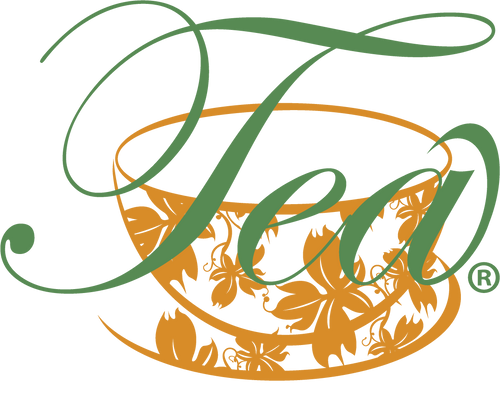Consumed by humans for nearly five millennia, tea has an interesting and complex history. From those who first unraveled its mysteries and shared them with the world, to the patriots who made it a central part of the struggle for liberty, tea has transformed from a simple beverage into a worldwide phenomenon.
Discovery in China
Native to East Asia, tea is thought to have first been consumed during the reign of the Chinese Emperor Shen Nung. Said to have drunk boiled water for its hygienic qualities (sensible since the only way to check water quality was look upstream for bloated ox carcasses), the Emperor discovered a new beverage when the leaves from a tea tree (Camellia sinensis) fell into his cup. While there is no way to prove or disprove this fanciful tale, the same delicious and energizing qualities Shen Nung is said to have attributed to tea are still enjoyed by tea drinkers today.
Tea Drinking Catches On
The earliest documented evidence of tea drinking comes from Chinese medical texts created during the 3rd Century Han Dynasty. Prescribed for those who wished to increase alertness and improve concentration, the caffeinated beverage provided just the energy boost they needed. It is likely that these early tea drinkers came from royalty and the upper class because tea plants were still in limited supply at the time. This changed during the Tang dynasty, when the government grew interested in tea cultivation, and the first tea shops began to grow in popularity.
Introduction to Japan
At some point, Japanese Zen Buddhist priests visiting the Chinese mainland discovered that their Chinese counterparts consumed tea to help them stay awake and focused during countless hours of meditation. When they returned home, a supply of tea seeds made the journey with them. In time, tea became widely available in Japan as well. Zen Buddhism directly influenced the birth and growth of the Japanese tea ceremony; one of the best-known tea traditions in the entire world.
Tea Travels West
Synonymous with hospitality and culture, England is recognized around the world for its long-standing love affair with tea. When introduced to the West by Dutch traders at the start of the 7th century, tea was a novelty only the wealthy could afford. By the time King Charles II of England married Catherine of Braganza, it had become the favorite drink of Portuguese nobility. Unwilling to part ways with the beloved beverage, Catherine introduced tea drinking to her new homeland. In time, tea drinking was taken up by people at every level of society.
Afternoon Tea is Born
At a time when two meals a day was still the norm, Anna, 7th Duchess of Bedford bridged the gap by sharing tea and light refreshments with friends at midday. In short order, and perhaps singlehandedly, the British afternoon tea tradition was born! Working class people later included heartier fare, transforming teatime into their primary meal. As the tall, sturdy tables at which they ate and drank contrasted with the short, delicate ones retained by the gentry, that meal eventually came to be called “high tea.”
Tea-Fueled Rebellion
Sometimes tea and turmoil have gone hand in hand. Saddled with debt after the French and Indian War, England thought it wise to recoup some of her losses by boosting taxes on tea and other products shipped to the American Colonies. At that time, the colonial tea trade was completely monopolized by Britain, leaving citizens no choice but to purchase it at inflated prices, or forego their favorite beverage. On the night of December 16, 1773, sixty or so fed-up colonists took matters into their own hands. Disguised as Native Americans, they silently boarded the Eleanor, Dartsmouth, and Beaver, and sent hundreds of tea chests plummeting into the dark waters of Boston Harbor. Later referred to as the Boston Tea Party, this colorful act of resistance was one of the events which triggered the American Revolution.
The Invention of Iced Tea
In 1904, St. Louis Missouri hosted the impressive spectacle known at the time as the World’s Fair. In addition to displays of art, architecture, and ingenuity, there were countless opportunities for refreshments. The unseasonably warm summer left tea vendor Richard Blechynden struggling to turn a profit peddling hot tea to fair visitors. Refusing to be bested by Mother Nature, he added ice to his tea in an attempt to boost sales, and voila! Iced tea was born. This new take on a beloved beverage grew wildly popular, and today, a majority of all the tea consumed in the United States is served cold.
Enter the Teabag
Just four years later, tea took yet another twist. Salesman Thomas Sullivan routinely shipped tea samples to New York City eateries in hand-sewn silk-muslin bags. The goal was to entice them to buy larger stocks to sell to their clientele. He soon discovered that restaurants were brewing small servings without bothering to remove the tea from the bags. The lightbulb went on, and within the year, Sullivan was shipping the first commercial teabags worldwide. The teabag proved to be such a useful invention that it nearly replaced loose leaf tea altogether in many parts of the world.
While there is undoubtedly more to be said about the history of the world’s favorite beverage, the sheer quantity of tea-related lore could fill volumes. What’s most important is that tea’s long, interesting, and sometimes complicated history touches every country and culture in one way or another. Whether serving as the centerpiece for culture, ceremony, or everyday social situations, tea has made its mark on humanity and will continue to do so as long as people keep brewing.
